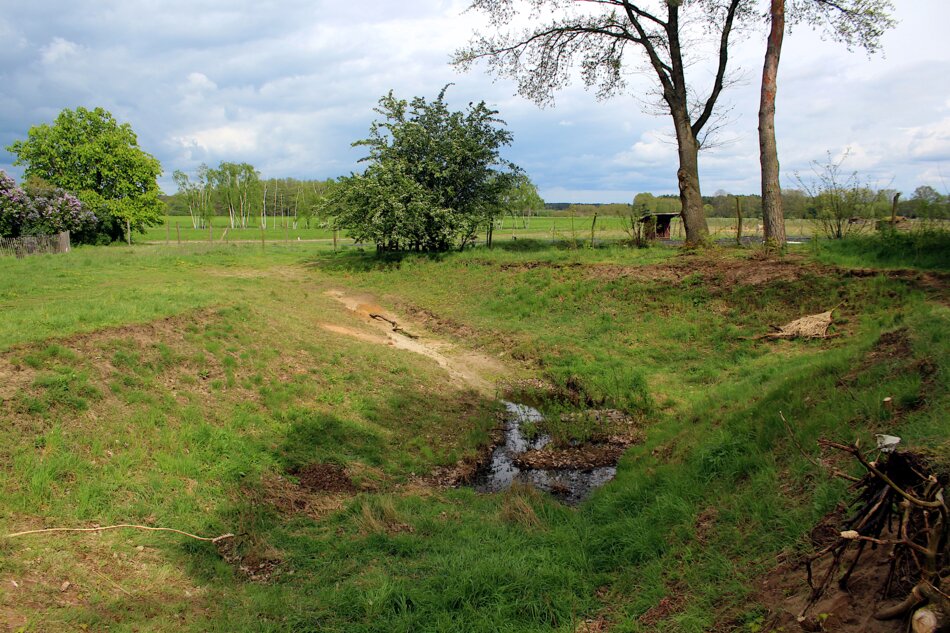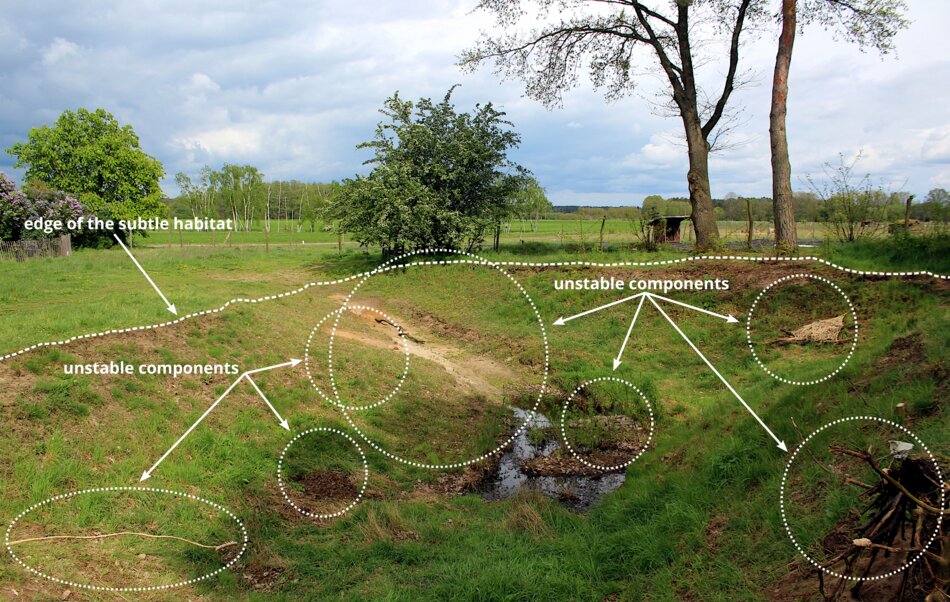Artwork Subtle Symbiosis
Portfolio Entry
After working on my “subtle habitat” idea in a courthouse and a car workshop, I turned it into a larger-scale outdoor art project.

Artwork Details
-
Title:Subtle Symbiosis
-
Year:2024
-
Medium (Type of Art):art environment
-
Unique Feature:‘subtle habitat’ made by ‘unstable components’
-
Medium (Materials):72 stones, coir tree-tie rope, natural raffia, coconut coir humus mix, jute climbing plant netting, coco coir pellets, holes dug by a canine, jute fleece raised bed mat, natural found objects (branches, animal skull, animal spine, pinecones), natural environment (soil, pond, roots, landscape, soil composed mainly of sand), artificial found objects (metal band, rusty metal disc, gravestone fragment)
-
Dimensions (International):140 square meters of outdoor area
-
Dimensions (British and US):1503.6 square feet of outdoor area
-
Venue:Landschaftspark Rietzer Berg, Kloster Lehnin, Brandenburg, Germany
-
Setting:Kunst-Eremitage’s artist residency, Landschafts- und Kunstverein Rietzer Berg
Ethical Statement
This artwork integrates found animal bones, carefully moved but returned to their natural surroundings. The piece also incorporates holes dug by a canine, left untouched in their natural condition. The artwork aims to raise awareness of our complex ecosystem. It celebrates natural animal behaviors respectfully, emphasizing non-appropriation of these elements and refraining from referencing any cultural or religious practices.
Establishing Context
In my previous projects, I have explored subtle visual and historical details in the environment to develop new layers of meaning and appeal.
Working with natural objects like stones, branches, and pinecones, I found them lacking human memories and realized how essential memories are for creating new meanings.
Then I discovered another kind of object: animal bones. These unique natural objects, being closer to humans than stones or branches, offer new opportunities for creating meanings.
Eventually, I also discovered some human artefacts, although they were fragmented. The natural environment seemingly altered these artefacts, causing them to rust or become easily broken.

Indeed, as I developed a “subtle habitat” outdoors, I had to contend with the sun, rain, and interactions with humans and animals.
Creating artworks outdoors prompted people to interact with them. People would touch or engage with different parts of the artwork. People interacting with artworks outdoors were unsure which objects were part of the artwork.
Unlike indoor spaces with clear boundaries, outdoor artworks lead to unpredictable interactions.
